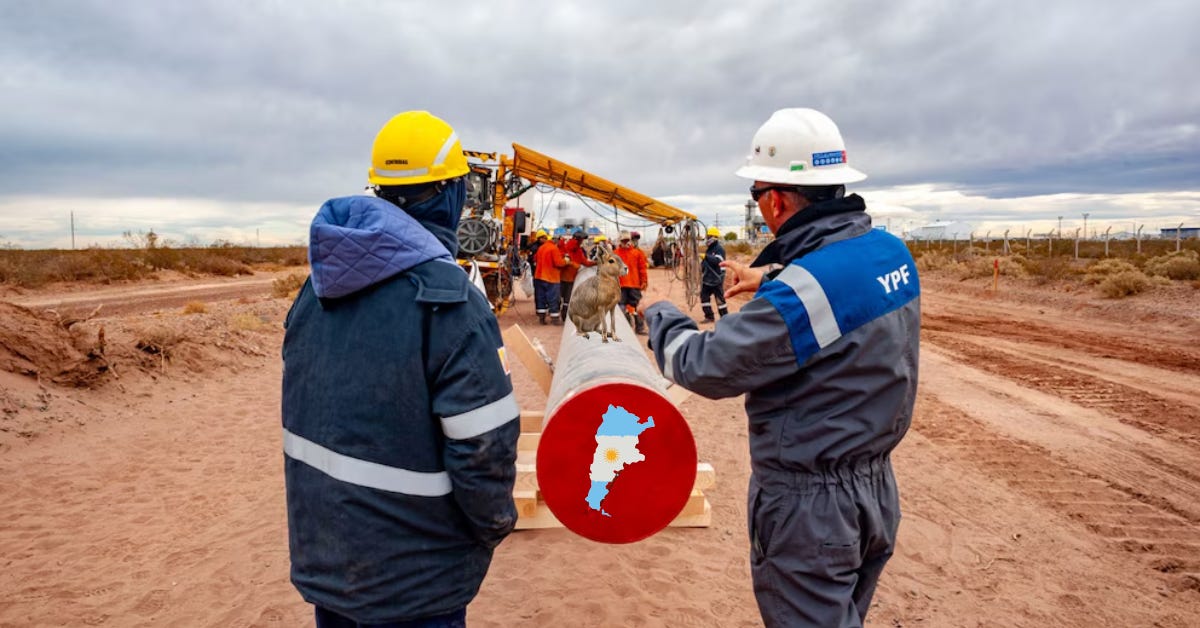Patagonian Texas
In October, Argentina's oil production surpassed its all-time high for monthly production after 27 years
Welcome Avatar! Argentina likely reached a record oil production in October, and with the new VMOS pipeline connecting Vaca Muerta directly with the Atlantic coast of Río Negro, the country’s trade surplus is only just getting started.
Argentina’s energy sector is experiencing a historic moment. Twenty-seven years after the record set in May 1998, the country is just one step away from surpassing it thanks to the boost from the unconventional shale formation Vaca Muerta located mostly in the Neuquén province.
Over the past two years, the Argentine energy sector has undergone a structural shift in its trade balance. Following a prolonged period of deficit, improved local production, particularly in natural gas, and tariff adjustments have led to a shift in the sector’s performance.

The oil and energy sector, with the Vaca Muerta shale formation as its star attraction, consolidated its position in 2025 as the main pillar of Argentina’s trade surplus. Between January and September, the energy surplus climbed to US$5.368 billion, a year-on-year increase of 45%, accounting for 89% of the trade surplus, which totaled US$6.030 billion.
Autist note — these are some of the previous energy related articles around Vaca Muerta and other areas in Argentina:
The province of Neuquén tripled its crude oil production between 2020 and 2025, going from 761,000 m³ to 2.24 million m³ per month, a growth of 197%. At the same time, gas production in the province increased by 28% in five years.
Below we will go over new developments in the energy sector in Argentina, and projections for the years to come.







